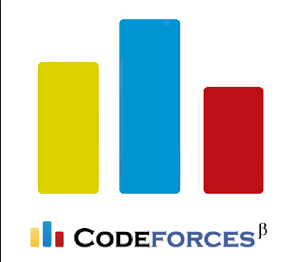Graph traversal means visiting every vertex and edge exactly once in a well-defined order. While using certain graph algorithms, you must ensure that each vertex of the graph is visited exactly once. The order in which the vertices are visited are important and may depend upon the algorithm or question that you are solving.
During a traversal, it is important that you track which vertices have been visited. The most common way of tracking vertices is to mark them.
Breadth First Search (BFS)
There are many ways to traverse graphs. BFS is the most commonly used approach.
BFS is a traversing algorithm where you should start traversing from a selected node (source or starting node) and traverse the graph layerwise thus exploring the neighbor nodes (nodes which are directly connected to source node). You must then move towards the next-level neighbor nodes.
As the name BFS suggests, you are required to traverse the graph breadthwise as follows:
- First move horizontally and visit all the nodes of the current layer
- Move to the next layer
Consider the following diagram. 

The distance between the nodes in layer 1 is comparatively lesser than the distance between the nodes in layer 2. Therefore, in BFS, you must traverse all the nodes in layer 1 before you move to the nodes in layer 2.
Traversing child nodes
A graph can contain cycles, which may bring you to the same node again while traversing the graph. To avoid processing of the same node again, use a boolean array which marks the node after it is processed. While visiting the nodes in the layer of a graph, store them in a manner such that you can traverse the corresponding child nodes in a similar order.
In the earlier diagram, start traversing from 0 and visit its child nodes 1, 2, and 3. Store them in the order in which they are visited. This will allow you to visit the child nodes of 1 first (i.e. 4 and 5), then of 2 (i.e. 6 and 7), and then of 3 (i.e. 7) etc.
To make this process easy, use a queue to store the node and mark it as 'visited' until all its neighbors (vertices that are directly connected to it) are marked. The queue follows the First In First Out (FIFO) queuing method, and therefore, the neighbors of the node will be visited in the order in which they were inserted in the node i.e. the node that was inserted first will be visited first, and so on.
Pseudocode:
BFS (G, s) //Where G is the graph and s is the source node
let Q be queue.
Q.enqueue( s ) //Inserting s in queue until all its neighbour vertices are marked.
mark s as visited.
while ( Q is not empty)
//Removing that vertex from queue,whose neighbour will be visited now
v = Q.dequeue( )
//processing all the neighbours of v
for all neighbours w of v in Graph G
if w is not visited
Q.enqueue( w ) //Stores w in Q to further visit its neighbour
mark w as visited.
Traversing process

The traversing will start from the source node and push s in queue. s will be marked as 'visited'.
First iteration
- s will be popped from the queue
- Neighbors of s i.e. 1 and 2 will be traversed
- 1 and 2, which have not been traversed earlier, are traversed. They will be:
- Pushed in the queue
- 1 and 2 will be marked as visited
Second iteration
- 1 is popped from the queue
- Neighbors of 1 i.e. s and 3 are traversed
- s is ignored because it is marked as 'visited'
- 3, which has not been traversed earlier, is traversed. It is:
- Pushed in the queue
- Marked as visited
Third iteration
- 2 is popped from the queue
- Neighbors of 2 i.e. s, 3, and 4 are traversed
- 3 and s are ignored because they are marked as 'visited'
- 4, which has not been traversed earlier, is traversed. It is:
- Pushed in the queue
- Marked as visited
Fourth iteration
- 3 is popped from the queue
- Neighbors of 3 i.e. 1, 2, and 5 are traversed
- 1 and 2 are ignored because they are marked as 'visited'
- 5, which has not been traversed earlier, is traversed. It is:
- Pushed in the queue
- Marked as visited
Fifth iteration
- 4 will be popped from the queue
- Neighbors of 4 i.e. 2 is traversed
- 2 is ignored because it is already marked as 'visited'
Sixth iteration
- 5 is popped from the queue
- Neighbors of 5 i.e. 3 is traversed
- 3 is ignored because it is already marked as 'visited'
The queue is empty and it comes out of the loop. All the nodes have been traversed by using BFS.
If all the edges in a graph are of the same weight, then BFS can also be used to find the minimum distance between the nodes in a graph.
Example:

As in this diagram, start from the source node, to find the distance between the source node and node 1. If you do not follow the BFS algorithm, you can go from the source node to node 2 and then to node 1. This approach will calculate the distance between the source node and node 1 as 2, whereas, the minimum distance is actually 1. The minimum distance can be calculated correctly by using the BFS algorithm.
Complexity:
The time complexity of BFS is O(V + E), where V is the number of nodes and E is the number of edges.
Code for BFS (using STL):
6 8 //node-edge
1 2 //node1-node2
1 4
2 4
2 5
4 5
5 3
3 6
6 6
Output:










0 Comments
If you have any doubts, Please let me know